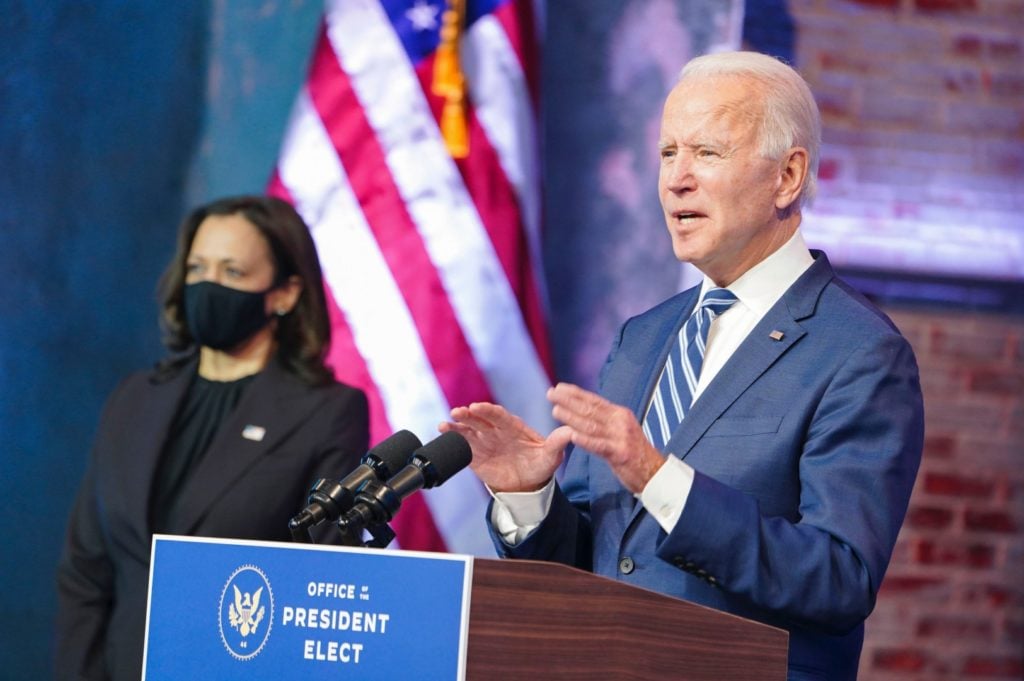
President Joe Biden has said this is the “decisive decade” for combating climate change, as he unveiled a new goal to at least half US emissions by 2030.
Speaking at a two-day summit that has brought together 40 world leaders to accelerate the global response to the climate crisis, Biden announced that the US will aim to cut greenhouse gas emissions 50-52% below 2005 levels by 2030, putting the country on the path to a carbon pollution-free power sector by 2035.
Unlock unlimited access for 12 whole months of distinctive global analysis
Photovoltaics International is now included.
- Regular insight and analysis of the industry’s biggest developments
- In-depth interviews with the industry’s leading figures
- Unlimited digital access to the PV Tech Power journal catalogue
- Unlimited digital access to the Photovoltaics International journal catalogue
- Access to more than 1,000 technical papers
- Discounts on Solar Media’s portfolio of events, in-person and virtual
The new objective nearly doubles former President Obama’s goal of an emissions cut of 26%-28% below 2005 levels by 2025.
The White House said the new target is consistent with Biden’s aim of achieving net-zero greenhouse gas emissions by no later than 2050 and of limiting global warming to 1.5 degrees Celsius.
“Particularly those of us who represent the world’s largest economies, we have to step up,” Biden said. “Those that do take action and make bold investments in their people and clean energy future will win the good jobs of tomorrow and make their economies more resilient and more competitive.”
America is back. We rejoined the Paris Agreement and are ready to rally the world to tackle the climate crisis. Let’s do this.
— President Biden (@POTUS) April 22, 2021
With the summit designed to kickstart climate action ahead of the UN Climate Change Conference (COP26) in Glasgow later this year, a host of countries revealed updated emissions reduction goals this week, starting with the UK, which has committed to cutting emissions by 78% by 2035 compared to 1990 levels. “We want to see world leaders follow our lead and match our ambition in the run up to the crucial climate summit COP26,” Prime Minister Boris Johnson said.
The European Union (EU) this week reached a provisional agreement of cutting greenhouse gas emissions by at least 55% by 2030 compared to 1990, up from the previous target of 40%. The European Climate Law will also aim to make the EU climate-neutral by 2050, putting the bloc “on a green path for a generation”, according to EU Commission President Ursula von der Leyen.
Notable announcements during yesterday’s (22 April) summit saw Japan raise its target for cutting emissions to 46% by 2030 from 2013 levels and Canada increase its goal to a cut of 40%-45% below 2005 levels by 2030, while South Korea said it will halt financing for new overseas coal plants.
China, the world’s largest carbon polluter, pledged to cap coal use by 2025. The country last year announced targets to peak CO2 emissions by 2030 and reach carbon neutrality by 2060.
Renewables trade bodies and think tanks have commended the Biden administration’s pledges, but there have been calls for more financial assistance to help developing countries reduce their own emissions.
While the summit sends a “clear signal that the US is firmly back in the game and serious about taking on the global climate crisis”, new commitments for financial support for vulnerable countries is “woefully inadequate”, said Manish Bapna, interim president and CEO of the World Resources Institute.
“The US committed to increase overseas climate finance to around US$5.7 billion per year by 2024, which is a start, but lags many other developed countries and does not meet the needs expressed by leaders of vulnerable countries,” he added.
Meeting the 50% reduction in greenhouse gas emissions target by 2030 will require a “rapid transformation” of the US’s power sector and “significant investment in a 21st century grid”, said Gregory Wetstone, president and CEO of the American Council on Renewable Energy.
“The renewable energy sector already employs hundreds of thousands of Americans and is poised to do its part in the transition to a carbon-free grid, a step that will create millions of additional good-paying jobs while saving money for consumers and preventing the worst impacts of climate change,” he added.







